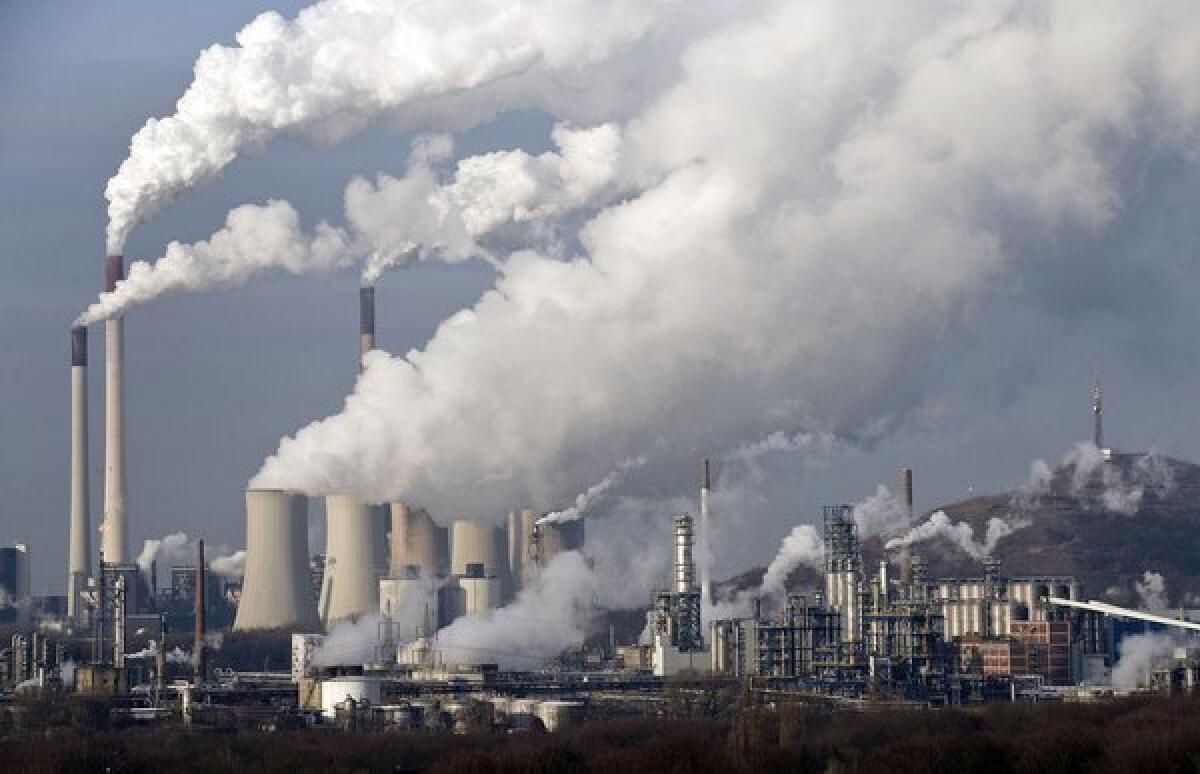Earth warmed faster in the last few decades than the previous 1,900 years, study says

- Share via
It’s not just humans who track long-term trends in the weather. The history of our planet’s climate is recorded by nature herself — written in tree rings and arctic ices, corals and deep ocean sediments.
Each of these records tells only a small piece of the Earth’s climate story, but together they form a sprawling and complex novel of the past. They help scientists better understand how and why certain trends emerged, and they foreshadow what we might expect the Earth’s climate to look like in the future.
In 2017 an international consortium known as PAGES (Past Global Changes) published its largest database yet of climate temperature records, stretching back 2,000 years to the start of the Common Era.
The data points came from 648 locations across the globe, including all the continents and major ocean basins.
Scientists have only just begun to mine the PAGES data for insights into trends of the past, but already they have made some intriguing discoveries.
The detailed records from both nature and humans show that the Earth’s average surface temperature has risen faster in the last few decades than it did in the previous 1,900 years, proving once again that the planet’s current warming is unprecedented in the past two millenniums.
What’s more, the data also suggest that this warming has been uniform across all regions of the globe, a phenomenon that scientists say has not been seen in the past 2,000 years.
For most of the Common Era, volcanic events have been the primary driver of global temperature change, according to the analysis. Today, greenhouse gases in the atmosphere play a more dominant role in driving global temperature.
These findings appeared in a trio of papers published this week in the journals Nature and Nature Geoscience.
Raphael Neukom, a paleoclimatologist at the University of Bern in Switzerland who led two of the three studies, said they all suggest the same thing: “Climate variability in the pre-industrial period is totally different from what we observe today.”
Some of the new findings contradict, or at least complicate, previously held truths.
For example, in a Nature paper, Neukom and his colleagues poke holes in the widely accepted theory that periods of cooling and warming over the past 2,000 years affected the globe uniformly.
Perhaps the most well-known of these epochs is what scientists call the Little Ice Age, a cool period that persisted from the 16th century to the 19th century. Similarly, the Medieval Climate Anomaly is known as a warm, dry period that lasted from 950 to 1250.
“The traditional understanding was that climate over these periods were globally coherent,” said Nathan Steiger, a paleoclimatologist at Columbia University in New York who worked on the paper with Neukom. “But when we looked at the PAGES data, we found they are not as coherent as we thought.”
After analyzing the data using multiple statistical methods, the authors found that what were previously assumed to be global temperature trends were actually regional trends for all known climate epochs except for one: the one we find ourselves in today.
For example, while the Little Ice Age did represent a global cooling, some parts of the planet were coldest during the mid-19th century, while others had their coldest weather several centuries earlier. At the height of the Medieval Climate Anomaly, only 40% of the Earth experienced peak temperatures at the same time.
But when the authors ran the same analysis for our current climatic epoch — known as the Contemporary Warm Period — they found that peak temperatures have been seen across all regions of the globe, except Antarctica, within the past 51 years.
“The familiar maxim that climate is always changing is certainly true,” Scott St. George, a geographer at the University of Minnesota at Minneapolis who was not involved in the work, wrote in a commentary published in Nature. “But even when we push our perspective back to the Roman Empire, we cannot discern any event that is remotely equivalent ... to the warming over the past few decades.”
The authors did not look into what might be causing this unique phenomenon because, as Steiger said, it wasn’t necessary.
“There is a lot of evidence that the Contemporary Warming Period is human-caused,” he said. “We don’t need the paleolithic climate data to address that.”
In another study, a team led by climatologist Stefan Brönnimann of the University of Bern in Switzerland used the PAGES data to explore the causes of climate fluctuations from 1300 to 1800. This analysis led the team to conclude that a cluster of volcanic eruptions were the primary drivers of global temperature change during this period, and that their effects lingered over many decades.
(Large volcanic eruptions can cause wide-scale cooling because their ash gets into the stratosphere and reflects sunlight back into space.)
The researchers argue that at least some of the global temperature increases that began in the 1830s were probably due to the planet’s slow recovery from volcanically induced cooling. However, the data also suggest that from the late 19th century onward, greenhouse gases in the atmosphere dominated the subsequent warming trend.
Today, there is little doubt among scientists as to how those greenhouse gases got into our atmosphere.







